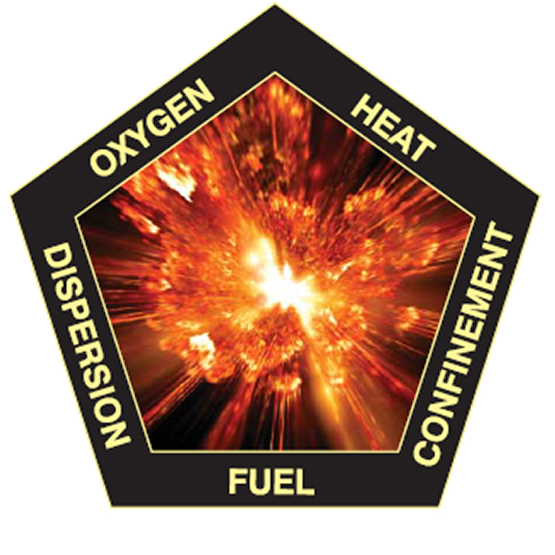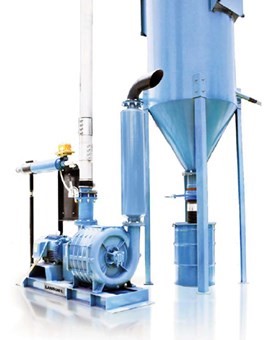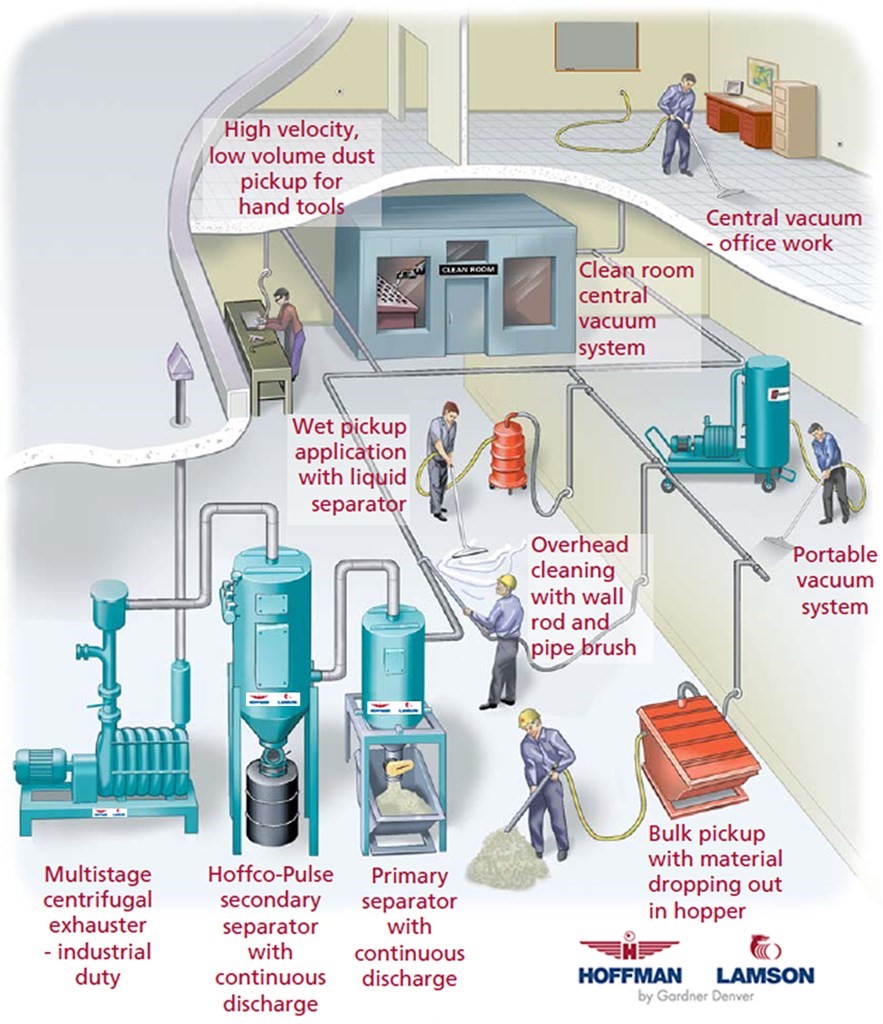Choose a different country or region to see the content specific to your location
Select Your Country/Region
Current Region:
 Global (EN)
Global (EN)
Combustible dust can be formed by milling, sanding, grinding, crushing, cutting or simply handling material that is in powder form. When dust accumulates in a mill or factory, it can explode and result in fire and destruction. Every manufacturing facility is vulnerable.
In 2008, following several news-worthy mill explosions, OSHA reissued CPL 03-00-008, which outlines recommendations and guidelines for decreasing combustion risk. Safety organizations continues to focus on this problem and the ways to reduce it.
Three items are needed for a fire:
Add two more, and you have the elements needed for a combustible dust explosion:

If a dust cloud is ignited within a confined or semi-confined area, it burns very rapidly and may explode. This initial explosion may shake loose more dust or damage a dust containment system. As a result, the additional dust may cause secondary explosions which can be far more destructive than the first one due to the increased quantity and concentration of the dispersed combustible dust.
Variables such as particle size, shape, ventilation systems, air currents and moisture content can affect the combustibility of a dust. In addition, these variables can change when the materials is being processed. Thus, published tables of dust explosibility may be of limited value, even if the particle size is larger than the NFPA 654 definition of "any finely divided solid material that is 420 microns or smaller in diameter."
NFPA 654, section 8.2.2.2, states that "vacuuming shall be the preferred method of cleaning." The report continues, in section 8.2.2.4, to state that when blow-downs using compressed air or steam are used, "vacuuming, sweeping or water wash-down methods are first used to clean surfaces that can be safely accessed prior to using compressed air."

Both OSHA, the FDA, and NFPA prefer housekeeping methods that employ vacuum. Some plants try to use shop-style vacuums. These can be alright for general cleaning, but they can increase the risk of explosion if used with combustible dust. In these circumstances, a central vacuum system is a better option.
Central vacuum systems differ from traditional pneumatic conveying systems or dust collection systems. Pneumatic conveying systems have a defined source and destination while a central vacuum system varies in the number and location of the pick-up vacuum points. Most systems are designed for multiple users, and thus they need to perform equally well when one or multiple users are using the system at one time.
Vacuum systems are available as either a portable or a central system. A portable system typically has a collection container mounted on wheels and a flexible plastic hose attached to the container. Various vacuum attachments can be used on the free end of the hose. The vacuum is supplied by a blower or by plant compressed air.
A central system consists of a vacuum power unit with a collection container and it is usually installed at one location in the plant. In some applications, the power unit and container ore on wheels so the system can be moved. A network of tubes extends from the collection container along the ceiling to multiple workstations or pickup points. At each station, a flexible hose is connected to the vacuum network at the top and drops down to operator level at the bottom. As with a portable system, the free end can use a myriad of attachments - each designed for optimum pickup of certain types of materials and in certain locations. The central system usually has a larger blower running it.

HOFFMAN & LAMSON central vacuum systems offer solutions to eliminate risk of explosion to protect your employees and comply with OHSA regulations. From explosion vents to isolation valves, suppression systems, and flameless devices, our vacuum systems offer customizable options that minimize potential for combustion, backed by our history of reliable performance.
The Standards Council of the National Fire Protection Association (NFPA) has issued the 2013 revision of NFPA 654: Standard for the Prevention of Fire and Dust Explosions from the Manufacturing, Processing, and Handling of Combustible Particulate Solids. Now is in effect, it incorporates several significant changes, most notably in housekeeping and in establishing whether or not a flash fire or explosion hazard exists within a facility.
Section 8.2 outlines requirements for a formal housekeeping plan. Plants must implement a planned inspection process to evaluate dust accumulation rates and housekeeping frequencies to prevent threshold accumulation levels from developing on walls, floors, horizontal surfaces such as equipment, ducts, pipes, above suspended ceilings and on concealed surfaces such as electrical enclosures.
Section 8.2.1.4 mandates a documented risk assessment to determine the level of housekeeping needed for compliance with the new rules. Learn more at www.OSHA.gov